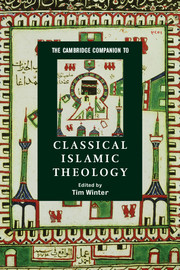4 - The developed kalām tradition
from Part I: - Historical perspectives
Published online by Cambridge University Press: 28 June 2008
Summary
PART I: SUNNISM
A few initial points need to be made about the nature of Islamic theology in its later stages before a discussion of some of its main themes and thinkers can be attempted. First, there often exists no clear distinction between Islamic theology, in the sense of kalām, and the other Islamic and not so Islamic sciences, such as grammar, jurisprudence (fiqh), philosophy (falsafa/hikma), Sufism, and the even more specific activities of learning how to operate with the Traditions of the Prophet, and how to assess and rank the chains of narrators which differentiate their levels of reliability. Islamic theologians did not usually strictly separate what they did from all these other activities, and so it is not easy to provide a neat account of precisely what is “theological” and what is not.
The first four centuries of Islamic theology had been a time of vibrant creativity. The whole structure of the subject was being created, with its novel vocabulary and its distinctive hermeneutic techniques, but by the time of Ghazelī the basic paradigms were already well established, and kalem was rivalling or outstripping falsafa in intellectual eminence. It is often said that the assault of Ghazelī on philosophy destroyed the latter in the Islamic world until (and perhaps even in) modern times, and that he replaced philosophy with theology and Sufism. This is not true; for one thing falsafa as a discipline did not die; it continued to flourish in the Persian world and to some extent among the Ottomans, and it was only in the Arabic-speaking regions of Islam that it sank into a marked decline, until reviving in the nineteenth century as part of the Nahda or Arabic-Islamic “renaissance”. However falsafa's key concerns and methods lived on, and flourished, within developed kalām.
- Type
- Chapter
- Information
- The Cambridge Companion to Classical Islamic Theology , pp. 77 - 96Publisher: Cambridge University PressPrint publication year: 2008
- 5
- Cited by



